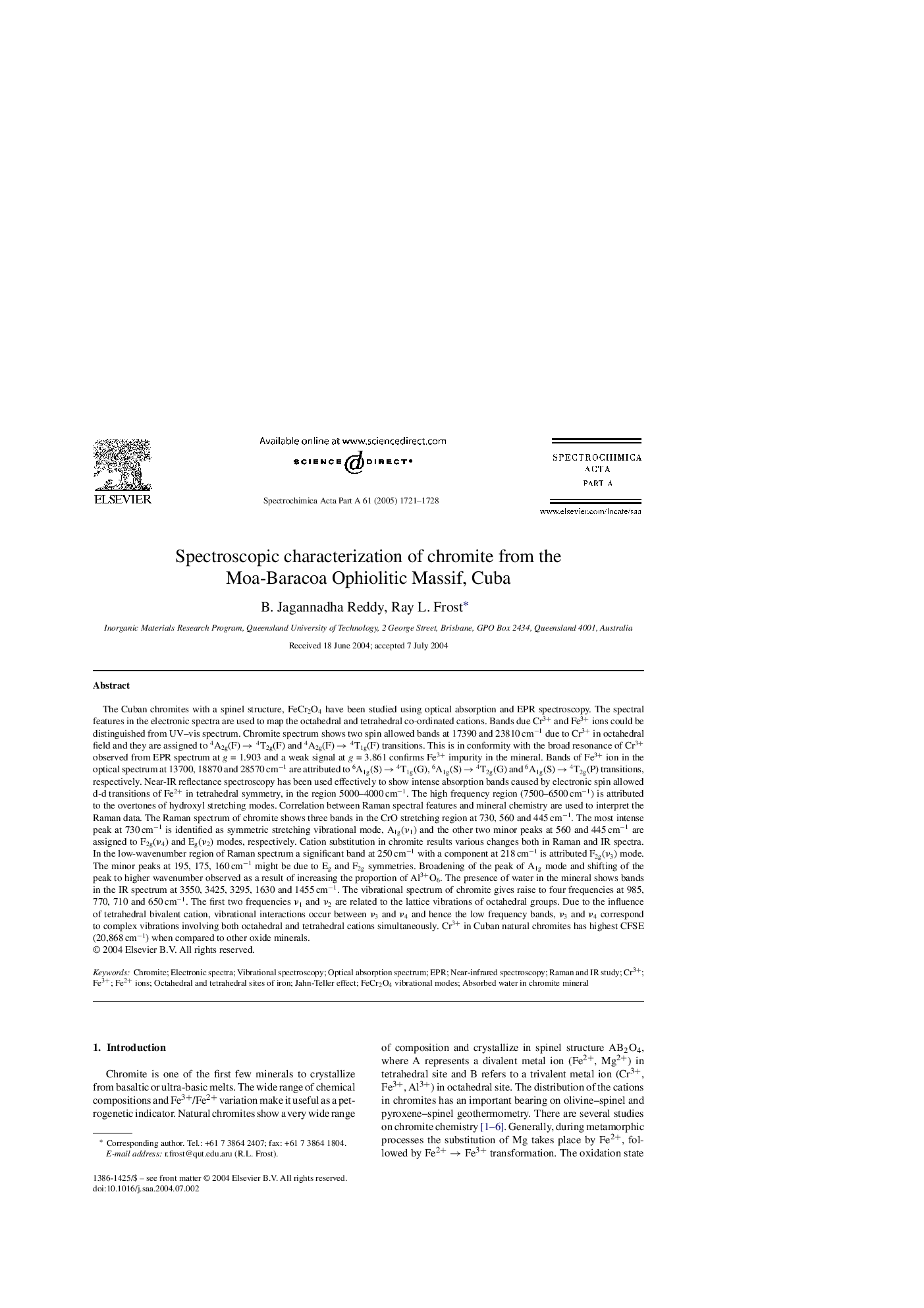| Article ID | Journal | Published Year | Pages | File Type |
|---|---|---|---|---|
| 10558188 | Spectrochimica Acta Part A: Molecular and Biomolecular Spectroscopy | 2005 | 8 Pages |
Abstract
The Cuban chromites with a spinel structure, FeCr2O4 have been studied using optical absorption and EPR spectroscopy. The spectral features in the electronic spectra are used to map the octahedral and tetrahedral co-ordinated cations. Bands due Cr3+ and Fe3+ ions could be distinguished from UV-vis spectrum. Chromite spectrum shows two spin allowed bands at 17390 and 23810 cmâ1 due to Cr3+ in octahedral field and they are assigned to 4A2g(F) â 4T2g(F) and 4A2g(F) â 4T1g(F) transitions. This is in conformity with the broad resonance of Cr3+ observed from EPR spectrum at g = 1.903 and a weak signal at g = 3.861 confirms Fe3+ impurity in the mineral. Bands of Fe3+ ion in the optical spectrum at 13700, 18870 and 28570 cmâ1 are attributed to 6A1g(S) â 4T1g(G), 6A1g(S) â 4T2g(G) and 6A1g(S) â 4T2g(P) transitions, respectively. Near-IR reflectance spectroscopy has been used effectively to show intense absorption bands caused by electronic spin allowed d-d transitions of Fe2+ in tetrahedral symmetry, in the region 5000-4000 cmâ1. The high frequency region (7500-6500 cmâ1) is attributed to the overtones of hydroxyl stretching modes. Correlation between Raman spectral features and mineral chemistry are used to interpret the Raman data. The Raman spectrum of chromite shows three bands in the CrO stretching region at 730, 560 and 445 cmâ1. The most intense peak at 730 cmâ1 is identified as symmetric stretching vibrational mode, A1g(ν1) and the other two minor peaks at 560 and 445 cmâ1 are assigned to F2g(ν4) and Eg(ν2) modes, respectively. Cation substitution in chromite results various changes both in Raman and IR spectra. In the low-wavenumber region of Raman spectrum a significant band at 250 cmâ1 with a component at 218 cmâ1 is attributed F2g(ν3) mode. The minor peaks at 195, 175, 160 cmâ1 might be due to Eg and F2g symmetries. Broadening of the peak of A1g mode and shifting of the peak to higher wavenumber observed as a result of increasing the proportion of Al3+O6. The presence of water in the mineral shows bands in the IR spectrum at 3550, 3425, 3295, 1630 and 1455 cmâ1. The vibrational spectrum of chromite gives raise to four frequencies at 985, 770, 710 and 650 cmâ1. The first two frequencies ν1 and ν2 are related to the lattice vibrations of octahedral groups. Due to the influence of tetrahedral bivalent cation, vibrational interactions occur between ν3 and ν4 and hence the low frequency bands, ν3 and ν4 correspond to complex vibrations involving both octahedral and tetrahedral cations simultaneously. Cr3+ in Cuban natural chromites has highest CFSE (20,868 cmâ1) when compared to other oxide minerals.
Keywords
Related Topics
Physical Sciences and Engineering
Chemistry
Analytical Chemistry
Authors
B. Jagannadha Reddy, Ray L. Frost,
